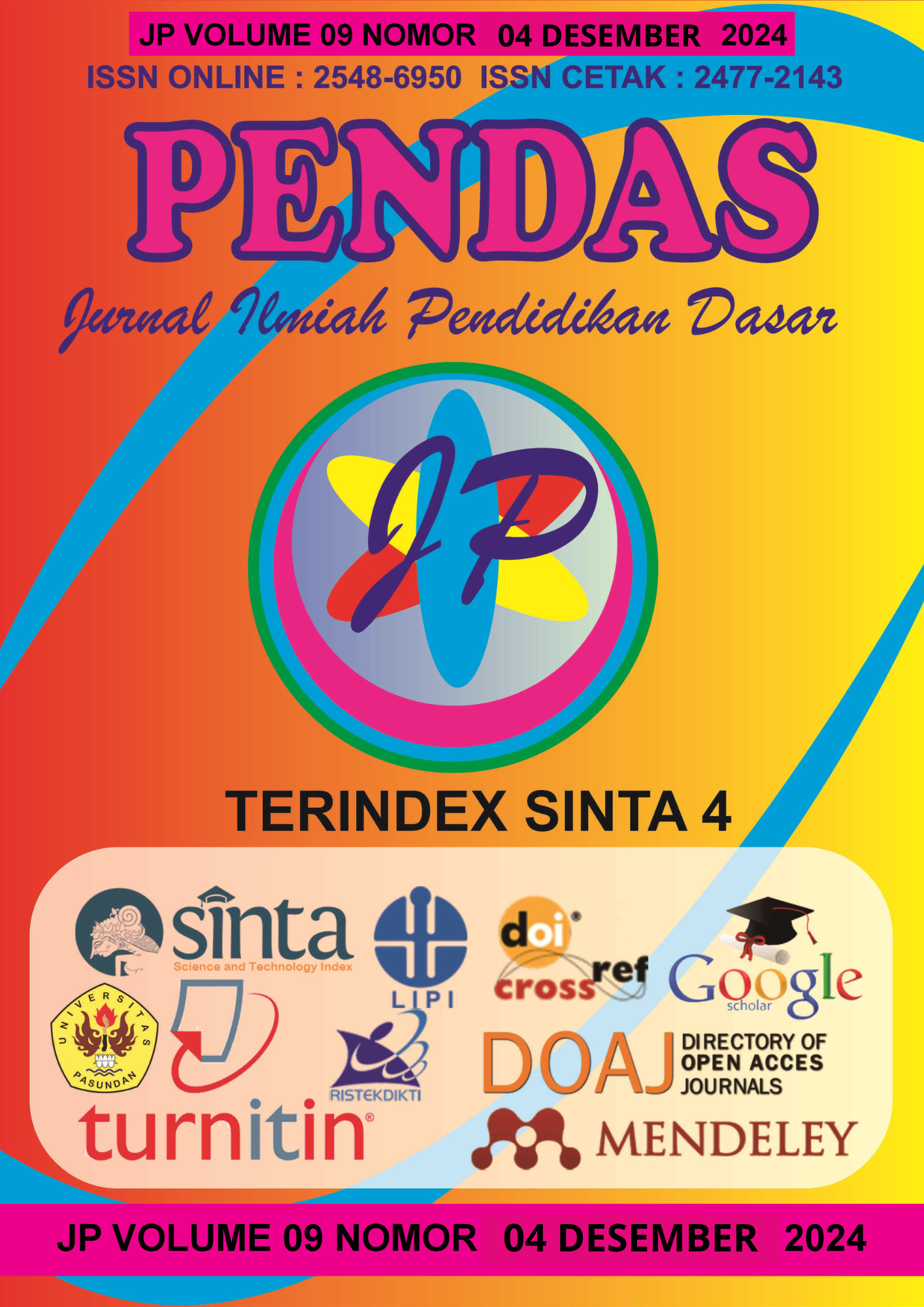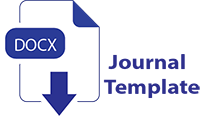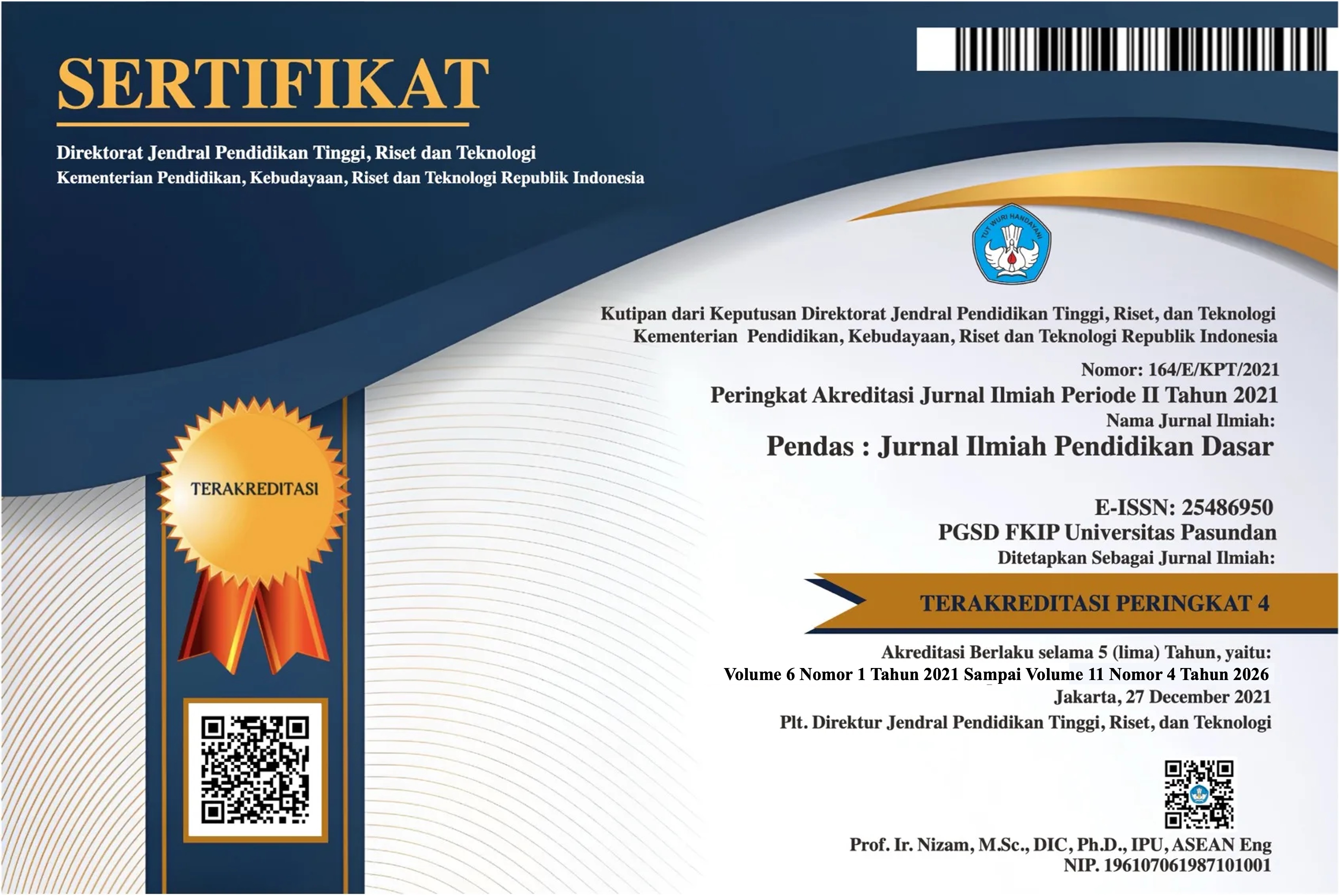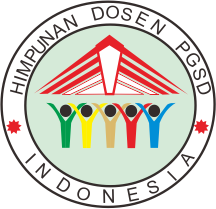IMPLEMENTASI MODEL PEMBELAJARAN PBL DALAM UPAYA PENINGKATAN HASIL BELAJAR PENDIDIKAN PANCASILA DITINJAU DARI GAYA BELAJAR PESERTA DIDIK KELAS 6B SDN PANDEANLAMPER 03
DOI:
https://doi.org/10.23969/jp.v9i04.20220Keywords:
Keywords: Differentiated approach, PBL, Learning OutcomesAbstract
Students' learning styles are different, therefore it is important for teachers to know students' learning styles. The aim of this research conducted at SDN Pandeanlamper 03 is to implement the PBL learning model in an effort to improve Pancasila Education learning outcomes in terms of students' learning styles. class 6B. The research began by conducting initial diagnostic tests to determine students' learning styles, creating teaching modules, implementing learning and evaluating learning outcomes. The type of research used is a combination of quantitative and qualitative research (mixed methods). The mixed method research design used was a sequential exploratory design. Quantitative research uses Pre-Experimental Designs in the form of one group pretest-posttest design. Quantitative research is used to determine student learning outcomes. Qualitative research is used to help understand differentiated learning in terms of students' learning styles and students' experiences in the classroom after the learning is implemented. This research obtained information about the implementation of the PBL learning model to improve Pancasila Education learning outcomes in terms of class 6B learning styles. The pretest results obtained the lowest score of 40 and the highest score of 80, while the posttest results obtained the lowest score of 60 and the highest score of 100 and seen from the N-Gain Score which is 0.5717 which is in the medium category, it can be concluded that Differentiated Learning with the PBL Model of Educational Materials Pancasila for Class 6B students at SDN Pandeanlamper 03 can improve learning outcomes. The data on student responses to differentiated learning in terms of learning styles received a positive response of 85 percent, meaning that differentiation learning in terms of learning styles made students happy and enthusiastic in learning.
Downloads
References
Creswell David & Creswell David. (2018). Research Design Qualitative, Quantitative, and Mixed Methods Approaches Fifth Edition. SAGE Publications.
Creswell, J. (2017). Pendekatan Metode Kualitatif, Kuantittatif dan Campuran. Pustaka Pelajar.
F. Fitriyah & M. Bisri. (2023). Pembelajaran Berdiferensiasi Berdasarkan Keragaman Dan Keunikan Siswa Sekolah Dasar. Jurnal Review Pendidikan Dasar, 67–73.
Marlina. (2019). Panduan Pelaksanaan Model Pembelajaran Berdiferensiasi di Sekolah Inklusif. PLB FIP UNP.
Muhibbin, S. (2011). Psikologi Belajar. Bumi Aksara.
Ngalim, P. (2002). Psikologi Pendidikan. Remaja Rosda Karya.
Rafiska, & R. S. (2023). Analisis Profil Gaya Belajar Peserta Didik Sebagai Data Pembelajaran Berdiferensiasi Di Kelas XII SMA Negeri 1 Palembang. Research and Development Journal of Education, 9(1), 474–482.
Reffiane, F. (2024). ANALISIS DIFERENSIASI KARYA PADA KEMAMPUAN LITERASI SEMARANG Fine Reffiane , Choirul Huda , Mudzanatun , dan Ferina Agustini Info Artikel Abstrak. 14(1).
Rohmah, A., & Zulfitria. (2024). Strategi Pembelajaran Diferensiasi Berbasis Aktivitas Dalam Meningkatkan Motivasi Belajar Siswa SD. 4(4), 214–222.
Sugiyono. (2014). Metode Penelitian Pendidikan Pendekatan Kuantitatif, Kualitatif, dan R&D. Alfabeta.
Sugiyono. (2018). Metode Penelitian Kuantitatif, Kuliatatif dan R&D. Alfabeta.
Downloads
Published
Issue
Section
License
Copyright (c) 2025 Pendas : Jurnal Ilmiah Pendidikan Dasar

This work is licensed under a Creative Commons Attribution 4.0 International License.



















